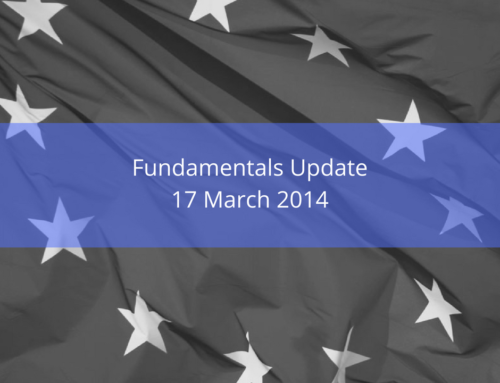Euro Zone Deflation January 2014
Fundamentals Update as at 8 January 2014 by Lorenzo Beriozza
According to preliminary calculations, the rate of inflation in the euro zone fell from 0.9% in November to 0.8% in December (table). The rate is thus approaching its low (0.7%) from October when the ECB lowered interest rates in a surprise move.
There is consensus that the rate of inflation will not drop below 0.8% in the months ahead. The decline in inflation seen in the second half of 2013 is largely due to falling energy prices. This downtrend is unlikely to continue.
Crude oil prices in euros are likely to have reached their lows. Moreover, Germany raised its EEG (Renewable Energy Sources Act) surcharge by 18% at the start of the year. This alone has resulted in a 3% increase in electricity prices in Germany. The unusually mild weather is a risk factor, though. If it were to continue much longer, heating oil prices might come under pressure.
Inflation excluding energy, food, drink and tobacco fell to 0.7% in December. Near-term, higher indirect taxes and duties in some countries should prevent a further decline. What will be key in the medium term, however, is that the stabilisation of the labour market situation will prevent even stronger pressure on wages.
On balance, the rate of inflation should initially stick to 0.8%. In April, it is likely to rise to 1% again. Insofar, the rate of inflation is unlikely to be reason for the ECB to ease interest rates further in the months ahead. At the same time, however, ECB is expected to take additional quantitative measures to boost lending activity.
Source: Commerzbank


